Business News Posts on Crowch
In recent years, the world has come to recognize the value of local initiatives. Small Business Saturday, held on the last Saturday of November, has become a symbol of this awareness. On this day, millions of people across different countries choose small shops, cozy cafés, and creative workshops instead of large retail chains, turning the day into a true celebration of entrepreneurship.
🛒 More than shopping
Small Business Saturday is not about discounts or chasing deals. It’s about choosing quality, uniqueness, and a human touch. Every purchase at a small business is a gesture of support, recognition, and respect for the work of those who enrich our communities.

🌱 Small businesses = big change
Each entrepreneur contributes to the growth of their city or neighborhood. Small businesses give character to streets, create jobs, and strengthen local economies. Money spent locally often stays in the community — supporting schools, cultural projects, and charitable initiatives.
❤️ The human connection
The magic of small businesses lies in their atmosphere of trust and warmth. Owners and staff know their customers, remember their preferences, and greet them with genuine care. It’s a personal touch that big retail chains can never replicate.
🙌 How can we take part?
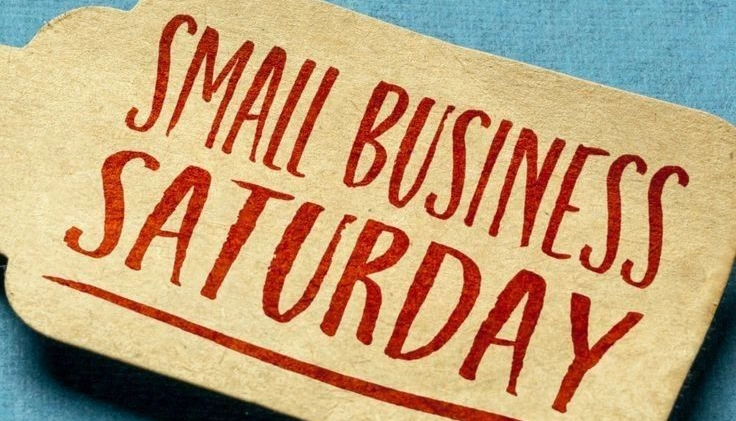
- Shop at a local store or market.
- Support a workshop or creative space.
- Share your favorite café or shop with friends.
- Promote small businesses on social media.
These small actions give entrepreneurs confidence and motivation to keep moving forward.
✨ A celebration of hope
Small Business Saturday reminds us that behind every storefront is a person, their dream, and their hard work. By supporting small businesses, we choose a world that values individuality, care, and community.
Small Business Saturday is a celebration of a future where success is measured not by size, but by heart.
Every last Saturday of November is celebrated as Small Business Saturday, a day that is less about discounts and more about people — the entrepreneurs who dared to follow their dreams, and the customers who choose to support them.
🌱 Small businesses, big dreams
Every small business begins with a dream. A young couple opening a coffee shop with homemade pastries. An artist turning a workshop into a gallery for the neighborhood. A family running a bookstore for generations. Behind every storefront is a story of dedication, risk, and love for what they do.
👩👩👧👦 Closeness and trust
Unlike big chains, small businesses thrive on personal relationships. When we step into a local café or shop, we are often greeted by name, our preferences remembered. This human touch builds a sense of closeness that no supermarket can replace.
🌍 Community impact
Supporting small business is about more than shopping. It is about strengthening the community. Local entrepreneurs often adopt eco-friendly practices, collaborate with neighbors, and create jobs close to home. Money spent locally stays local, fueling growth and resilience.
🙌 How to take part?
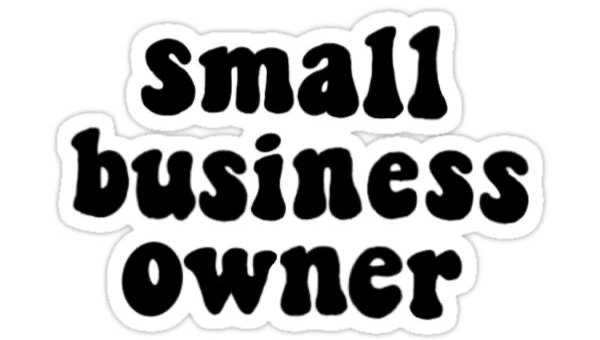
- Visit a small store instead of a mall.
- Buy a handmade gift.
- Share a post about your favorite local café.
- Simply say “thank you” to the owner.
Every small act helps preserve the uniqueness and diversity of our neighborhoods.
💖 A symbol of gratitude

Small Business Saturday reminds us that the true value of a business is not measured in size, but in heart. Even the smallest purchases become symbols of gratitude and investments in a shared future.
By celebrating Small Business Saturday, we celebrate people and stories that make our world warmer and more human.
🔍 The Debate: Will AI Destroy or Reinvent Marketing Jobs?
There’s no shortage of bold predictions about AI’s impact on the marketing profession. On one side, leaders like Demis Hassabis (Google DeepMind) suggest AI will unlock a surplus of new jobs, driving innovation and human creativity. On the other, Sam Altman (OpenAI) has bluntly warned that up to 95% of marketing roles could vanish, replaced by increasingly capable AI systems. Then there are marketing veterans like Rand Fishkin, who dismiss the fear entirely, arguing that the industry will adapt and thrive. So who’s right? The answer might lie somewhere in the middle — but one thing is clear: ignoring this shift is not an option. As AI continues to evolve, marketing as we know it is already being reshaped, and understanding this transformation is essential for anyone building a career in the field.

💡 The Core Truth: AI Makes Intelligence Cheap
Let’s strip away the hype and look at a few undeniable facts:
1. AI reduces the cost of intelligence to nearly zero.
Tasks that once required years of experience, domain expertise, or a team of analysts can now be handled in seconds by LLMs and automation tools.
2. AI is not just a tool — it’s a replacement system.
While it can assist human workers, businesses are increasingly using AI to fully automate tasks previously done by people — from email copywriting to SEO content planning and even campaign analysis.
3. Businesses follow the money.
When new technology promises immediate and measurable ROI, companies have every incentive to adopt it quickly. AI offers lower costs, faster output, and scalability — a compelling case in any boardroom.

🏢 What’s Likely to Happen Next in Marketing Employment
As AI systems become more advanced and integrated, the core value of human marketers will shift. Here’s what we can expect:
• Commodity-level marketing work will be automated: Think social media captions, A/B test optimization, and basic SEO — these are already being handled by AI with minimal human input.
• Strategy and human creativity will still matter, but only at the top: The demand will shift towards senior-level marketers who can think across disciplines, direct AI workflows, and align automation with brand purpose and customer emotion.
• Marketing teams will shrink: A single person, augmented by AI tools, can now outperform entire teams from five years ago. Companies will optimize headcount accordingly.
• Soft skills and brand intuition will become differentiators: As intelligence is commoditized, things like storytelling, empathy, and trust-building will separate good marketers from great ones.

🛡️ How to Future-Proof Your Career in Marketing
If the value of raw intelligence is approaching zero, then what keeps you valuable in the workforce? Here are a few actionable strategies:
1. Move up the abstraction ladder. Learn to oversee systems and workflows, not just perform tasks. Understand how to connect AI outputs with strategic outcomes.
2. Invest in soft skills. Storytelling, leadership, emotional intelligence — these will become your unfair advantage when technical tasks are handled by machines.
3. Build your AI fluency. You don’t need to become a machine learning engineer, but you do need to understand how AI models work, their limits, and how to prompt them effectively.
4. Develop a personal brand. People buy from people — and while AI can generate content, it can’t build trust. Having a recognizable personal voice, thought leadership, and community influence will insulate you from commoditization.
5. Stay adaptable. The tools will change. The tactics will evolve. Your ability to learn quickly and pivot will matter more than your mastery of any one platform.
🧭 Final Thoughts: Redefining Value in a Post-Intelligence Economy
The rise of AI doesn’t mean the end of marketing — it means the end of marketing as we knew it. The skills that once made marketers indispensable are becoming automated, and the focus is shifting toward creative judgment, ethical direction, and strategic leadership. In a world where machines can do the thinking, the human edge comes from intuition, context, emotion, and originality. Whether you’re a junior marketer just starting out or a CMO navigating this transformation, one thing is certain: those who evolve will not just survive — they’ll lead the next era of intelligent marketing.
⚠️ Autonomous Agents Aren’t Magic — They’re Code
The tech world loves a good story — and few have been juicier in recent years than the rise of autonomous AI agents. These aren’t just chatbots answering support tickets. They’re supposed to replace entire departments, make decisions in real time, and operate independently inside your business.
According to the narrative, your business will soon run on autopilot. Just plug in a few agents, connect them to your data, and let them do everything from marketing to supply chain optimization. Sounds incredible, right?
Well — here’s the twist: it’s not that simple.
Behind the glossy demos and slick marketing, AI agents don’t run on promises — they run on pipelines. And building those pipelines? That takes real engineering.

🛠️ The Truth: Real AI Needs Real Developers
Every serious team working in AI — whether at OpenAI, Anthropic, Google, or small-scale startups — already knows the score:
• LLMs are commoditized.
• “Talking to an AI” is table stakes.
• The real value lies in agentic architectures, where AIs are embedded in structured systems that perform meaningful tasks on their own.
But here’s the catch: even the best AI agents aren’t plug-and-play. They need to be orchestrated. They need monitoring, logic layers, fallback procedures, and access controls. And all of that lives far outside the neat world of prompt engineering.
To make AI do real work, you need pipelines: think sequences of functions, data transformations, API triggers, and human-in-the-loop checkpoints. You’re not building a chatbot — you’re engineering a nervous system.

💸 Big Tech’s Two-Front War: Engineers vs. Illusion
To understand why this illusion exists, look at what Big Tech is doing on two fronts:
1. The Hiring Arms Race
Top AI researchers are being offered $300M+ comp packages, even while companies lay off thousands of regular engineers. The industry is betting on a handful of visionaries to invent the future — but who’s left to actually build it?
2. The Marketing Overdrive
With flashy claims like “AI will run your business”, corporations are selling a dream. Your 100-person company? Replaced by 10 agents. Meetings? Gone. Processes? Collapsed into graphs of autonomous logic nodes. Decisions? Reduced to triggers and tokens.
Sounds beautiful. Efficient. Clean. But… not real — yet.

🤖 What’s Actually Working in the Wild?
Some companies are seeing results — but not the kind the keynote slides suggest. What’s working is this:
• Hybrid architectures, where agents handle structured tasks but humans oversee.
• Workflow automation, tightly scoped and highly customized.
• Agent frameworks, like AutoGen or LangGraph, used by engineers — not marketers.
• Trigger-based systems, not AI “decision-makers.”
🧠 Wait… Are We Blogging Again?
Believe it or not, blogs are making a big comeback — and this time, it’s not because the algorithm demands it. It’s because people do.
In an era oversaturated with AI-generated content and short-form social fluff, audiences — especially those in B2B and startup ecosystems — are hungry for something more real. Something grounded. Something… human. And startups are responding in kind. We’re seeing a return to authentic, long-form content where founders, builders, and creators speak directly to their audiences. Not through polished PR campaigns or algorithm-optimized carousels — but through blog posts, newsletters, and opinionated essays.

🔄 Back to the Blog: A Throwback with a Purpose
If this feels familiar, it’s because we’ve been here before. Think back to the golden era of startup blogging in the 2010s. Medium was on fire. Every founder had a hot take. Everyone was publishing lessons from their Series A or their customer discovery journey.
At the time, blogging felt like a natural extension of startup culture — share your journey, build your brand, and create credibility by documenting the process. Eventually, things shifted. SEO hacks, ghostwritten posts, and growth-first content crowded the landscape.
But now, we’re cycling back — and this time, authenticity is the engine. Why now? Because audiences can smell fake from a mile away, and AI has flooded the content market with surface-level repetition. That’s why genuine, imperfect, human-written content suddenly feels fresh and trustworthy again.

🧩 Authenticity Isn’t Just a Vibe — It’s a Strategy
Let’s be clear: this shift isn’t just nostalgic. It’s strategic. In 2025, building trust with customers, investors, and even future team members depends more than ever on transparency. People want to know who’s behind the product, why it was built, and what values shape its roadmap.
That’s where founder-led storytelling comes in. When startup leaders take the time to write their own blog posts — or even deeply collaborate with writers — they communicate something that no ad campaign can replicate: realness.
That doesn’t mean every post has to be personal or emotional. It just has to feel true. Whether it’s a technical breakdown, a reflection on early failures, or a roadmap update — the key is speaking in your own voice, not a corporate script.

✍️ Why Human Content Wins in a Sea of AI
AI is great — but it’s also made digital content feel increasingly robotic. Every other startup’s website starts to look the same. LinkedIn posts repeat each other. SEO-optimized articles regurgitate the same 10 bullet points. And so, authenticity becomes a differentiator.
Audiences reward originality. Investors notice founders who can clearly articulate their vision. Journalists prefer quoting voices that don’t sound like brand training manuals. In this landscape, writing a blog post isn’t old school — it’s a competitive edge. Just look at the explosion of Substack newsletters from startup founders, designers, and engineers. Many of them aren’t going viral — and that’s okay. What they’re doing is building trust, attracting the right audience, and reinforcing their brand with every honest word.
🧠 Lessons from the Blog-Fueled Frontlines
If you’re a startup founder wondering whether to jump in — do it. But do it right. Here are a few things to keep in mind:
• Speak in your actual voice. Drop the jargon. Don’t try to impress — try to connect.
• Tell stories, not strategies. Numbers are great, but what people remember are turning points, lessons learned, and honest reflections.
• Be consistent, not constant. You don’t need to blog every week. You just need to show up regularly enough to stay credible.
• Start small, then repurpose. A good blog post can become a LinkedIn thread, a podcast script, or a company-wide memo.
And most importantly: don’t outsource your voice. Even if you get help shaping your words, the ideas have to come from you. Authenticity isn’t just a format — it’s a commitment.
🔥 Authenticity Is the New Virality
In a world where content is being churned out by the terabyte, the rarest thing you can offer is your unfiltered perspective. People follow people — not brands. And the founders and creators who are willing to put themselves out there, with all their rough edges, are the ones who’ll build the strongest communities.
So yes, blogs are back. But more than that — voice is back. Humanity is back. Authenticity is back. And in startup marketing, that might be the most powerful tool you have.
Being a leader isn’t about being first. It’s about being the one who acts first. The one who invests energy when no one else believes. The one who sees potential when others see only problems. The one who listens when it would be easier to command. The one who sets the pace before it becomes comfortable. Leadership isn’t about control — it’s about moving forward, even when the path is unclear.
Today’s world no longer responds to authoritarian leadership. People don’t want bosses — they want partners they can grow with. A modern leader isn’t the top of a hierarchy, but a point of strength. They don’t assert authority — they help others find their own. They don’t say, “I know how,” but instead ask, “How would you do it?” They’re not afraid of different perspectives, because they understand that diversity is a resource, not a threat.
One of the key signs of real leadership is the ability to create an environment for growth. Not just assigning tasks, but supporting the process. Not just demanding results, but helping people get there. Leadership isn’t only about outcomes — it’s about evolution. When the people around you start to think bolder, speak more honestly, and believe in themselves more — that’s when you’re not just managing, you’re truly leading. And that’s the essence of leadership.
A strong leader isn’t afraid to take a step back so that someone else can step forward. They don’t compete with the team — they create conditions where the team grows stronger than the leader. That’s true maturity. A leader knows their goal isn’t to be indispensable, but to build something that thrives without constant control. Their role is not to be needed — but to build resilience.

A true leader thinks horizontally. They don’t just look at short-term wins, but long-term consequences — one, three, even ten years ahead. They think in meaning, not just metrics. They understand that quick wins are useful, but direction matters more. They ask hard questions and are comfortable waiting for the real answers.
Another vital leadership trait is the ability to slow down. In a world obsessed with speed and multitasking, pausing can be a superpower. Holding inner stillness while everything outside is in chaos — that’s rare and deeply valuable. And it’s from this inner calm that real decisions emerge.
A leader is not a hero. They are the person who chooses to carry more than they have to. It’s not always about success — often, it’s about resilience. The ability to keep going when no one is watching. Staying loyal to themselves and to others, even when it’s hard. Showing up every day with a quiet “I’m here,” when it would be easier to step aside.
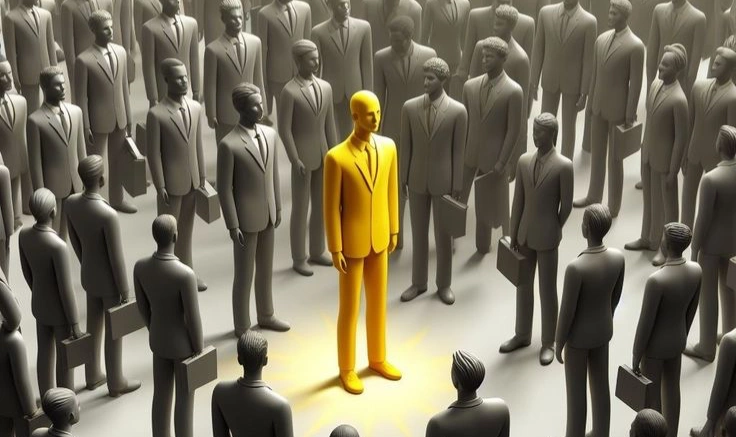
These are the leaders who shift the energy in teams, projects, and lives. Not because they tell others what’s right — but because they show what’s possible.
And the strongest kind of influence is example. People don’t follow those who simply speak louder. They’re drawn to those who act, especially when it’s difficult. Who stay true to themselves. Who remain calm in tension. Who don’t break under criticism, but learn from it. Who don’t put themselves at the center — but become a source of support for others.
A true leader isn’t always the one in the spotlight. More often, it's the person you barely notice — yet without them, nothing works. They don’t seek recognition, they seek results. They don’t build a cult of personality — they create an environment where others can grow. They understand that the stronger the team, the stronger the system. And they’re not afraid if someone around them shines brighter. Because their strength isn’t in dominance, but in trust.
A leader is someone who serves, not someone who controls from above. It may sound paradoxical, but service is the deepest form of leadership. Not submission, but a conscious choice to place the purpose, the team, the mission above one’s own ego. That doesn’t mean abandoning yourself — it means seeing something more than just yourself. A leader asks questions with no easy answers. They can go against the flow — not out of defiance, but out of integrity.
Often, the leader isn’t the one who knows the path — but the one who dares to search first. They take the unclear road, make mistakes, fall, get up, and share what they’ve learned. They’re not afraid to seem imperfect. Their strength lies in vulnerability. In being honest with themselves. They can say: “I don’t know, but I’ll figure it out,” “I made a mistake, and I’m growing from it,” or “This is hard, but I’m still going.” That is the kind of maturity the world needs — beyond slogans, beyond surface-level solutions.
A leader isn’t afraid to trust. Trust is always a risk — a chance you’ll be let down, misunderstood, or disappointed. But without trust, nothing moves. Control may create structure, but not inspiration. And it’s inspiration that brings people in. A true leader knows: engagement doesn’t come from fear — it comes from meaning. And they look for meaning — in work, in people, in each step they take.

Leadership is an internal stance. It can’t be forced. It can’t be assigned. You can only take it on when you understand that you’re ready to be responsible — not just for your actions, but for what comes after. Not for reward. Not for praise. But simply because you know, quietly, deeply: “I need to be here.”
Real leadership isn’t loud. It’s often quiet — but steady. It doesn’t demand attention, but creates the space for others to grow. And that’s why it matters. Because in a world where everyone is chasing outer success, the leader is the one who stays faithful to an inner compass. Who doesn’t build around themselves, but around meaning. Who doesn’t call others to follow — but simply walks. And by walking, lights the way for others.

Many people think of leadership as something external — charisma, confidence, public speaking, the ability to inspire and lead. And yes, these are important qualities. But true leaders are not formed on the stage — they are shaped in silence. Not during moments of victory, but in moments of doubt, failure, and difficult decisions. Being a leader means carrying not only responsibility but also loneliness, fear, and uncertainty. It’s not a role — it’s a journey.
On this journey, there are more questions than answers. A leader constantly faces choices where there’s no clear “right” or “wrong.” They learn not only to lead but also to let go. Not only to speak, but also to listen. A true leader understands that strength lies not in control, but in the ability to share influence. They don’t need to prove they’re better than others — they help others become better versions of themselves.
Leadership is a constant journey inward. It’s the ability to pause and ask, “Who am I right now, and who do I want to become?” It’s working through ego, ambition, and disappointment. It’s being able to acknowledge your weaknesses without using them as excuses. It’s maturity — not about being perfect, but about being whole.

Strong leaders grow from weak moments. When things fall apart. When they have to take a step into the unknown. When they admit they were wrong. When they ask for help. That’s when true resilience is born — the kind that separates a genuine leader from someone who just looks confident on the surface.
But leadership isn’t only about what happens inside. It’s also about how you relate to others. A real leader shares success. They don’t build a team of followers — they create a space where everyone has a voice, a role, and a sense of ownership. They don’t hide behind a title. They show up — listening, supporting, asking, guiding. They don’t control — they connect.
Modern leadership isn’t about pressure or authority. It’s about trust and development. It’s about seeing potential before it becomes obvious. It’s about helping someone believe in themselves — even when they’re still unsure. At its core, it’s not about power — it’s about maturity.
And yes, leaders make mistakes. They lose motivation. Sometimes they burn out. But they get back up and keep going. Because they know: someone is watching. Someone is following their example. Someone is learning from their actions, not just their words. And that’s what makes them a leader — not loud slogans, but quiet consistency.
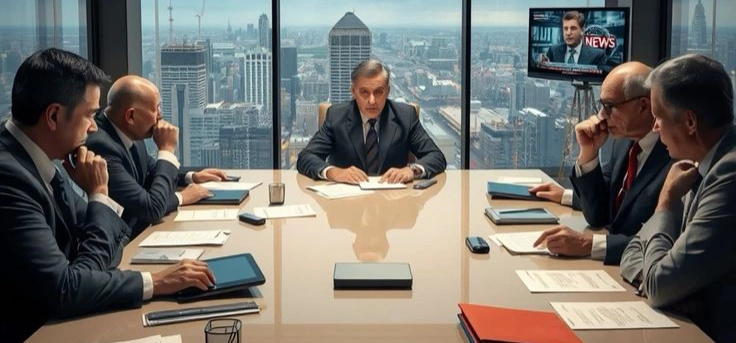
Leadership is a path. A long one, not always easy, but deeply meaningful. And if you’ve ever felt that spark — the sense of responsibility not just for yourself, but for others — maybe you’re already on that path. Just keep walking. True leaders don’t run ahead of the crowd. They walk alongside it. And they’re never afraid to be the first to stop and ask, “Are we even going in the right direction?”
Leadership isn’t about loud speeches, fancy titles, or rigid control. True leadership is about influence, trust, self-awareness, and the ability to inspire — not by order, but by example.
In today’s fast-changing world, the old image of the all-knowing, authoritarian leader no longer works. What matters now is the ability to listen, to adapt, to admit mistakes, and to show vulnerability. Because real strength doesn’t come from wearing a mask — it comes from being honest.
A leader is not the person who does everything alone. A true leader creates space for others to grow. They don’t compete — they connect. They don’t drag the team behind them — they empower it to move forward. A modern leader sets not just the pace, but the purpose.
Modern leadership is about:

- Empathy. To understand, feel, and support.
- Transparency. To speak honestly, even when the truth is difficult.
- Flexibility. To seek not the perfect solution, but the one that fits here and now.
- Respect. For time, experience, individuality.
A leader knows how to manage not only tasks, but also energy — their own and their team’s. They sense when to push and when to pause. They ask, “What do you need?” — and they actually listen to the answer.
A true leader serves before they lead. They build trust through consistent actions, not grand promises. They’re not afraid to say, “I don’t know,” because they understand that real confidence is not about knowing everything — it’s about being open to learning.

It’s important to remember: leadership is not a position. It’s a role you choose to take on every day. At any level. In any setting. In every conversation, decision, and reaction.
Sometimes, a leader is the person who offers support at the right moment. Who creates a safe space for ideas. Who says, “Let’s try,” instead of, “That’s not how we do it.”These small moments shape culture, trust, and real teamwork.
In a world where technology evolves faster than people can adapt, human-centered leadership has never been more essential.
A true leader isn’t the one who stands ahead of everyone else. They’re the one who stands beside you — helping you believe that you can move forward too.
When we think of leaders, we often imagine strength, confidence, and decisiveness. But today, the most powerful leaders are those who embody something deeper: the ability to listen, to be vulnerable, to admit mistakes, and to create space where others feel safe to grow.
A true leader doesn’t always need to be right. They’re willing to change their mind. They don’t command respect — they earn it. They don’t speak first — they ask better questions.
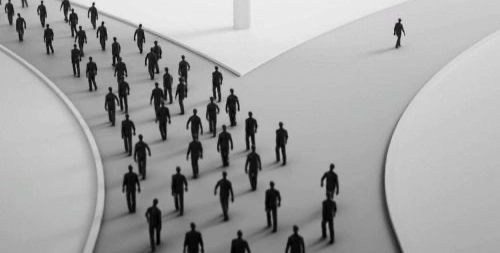
In reality, leadership shows up in the smallest daily moments: choosing kindness when you’re tired, letting someone else lead even if you could do it faster, giving credit instead of taking it.

Leadership isn’t about being on top. It’s about supporting those around you. It’s about creating culture, holding space, and making sure people feel seen, valued, and trusted.
We often imagine leadership as the peak of the mountain. But in truth, it’s the foundation — the steady ground that holds everything together: the team, the vision, the momentum.
Real leadership is the pause before the answer, the stillness before the choice, the eye contact when someone’s made a mistake. It’s the honesty when silence would be easier. It’s the care you give even when no one asks for it.